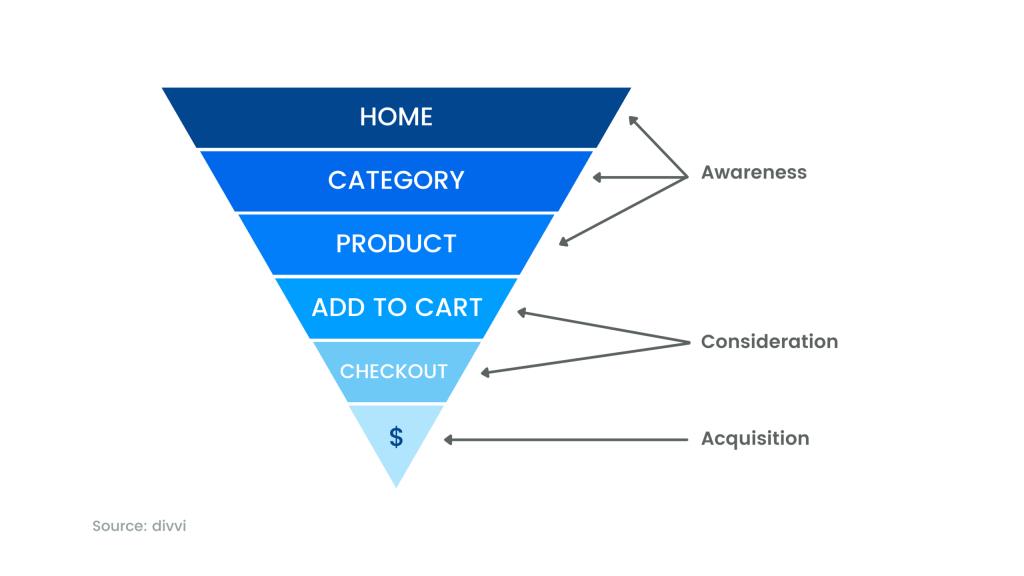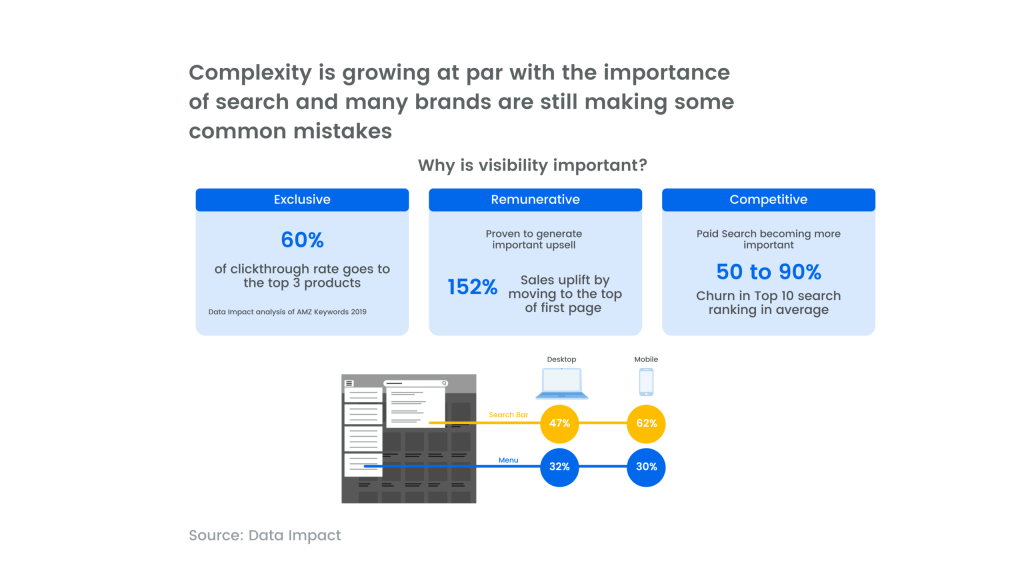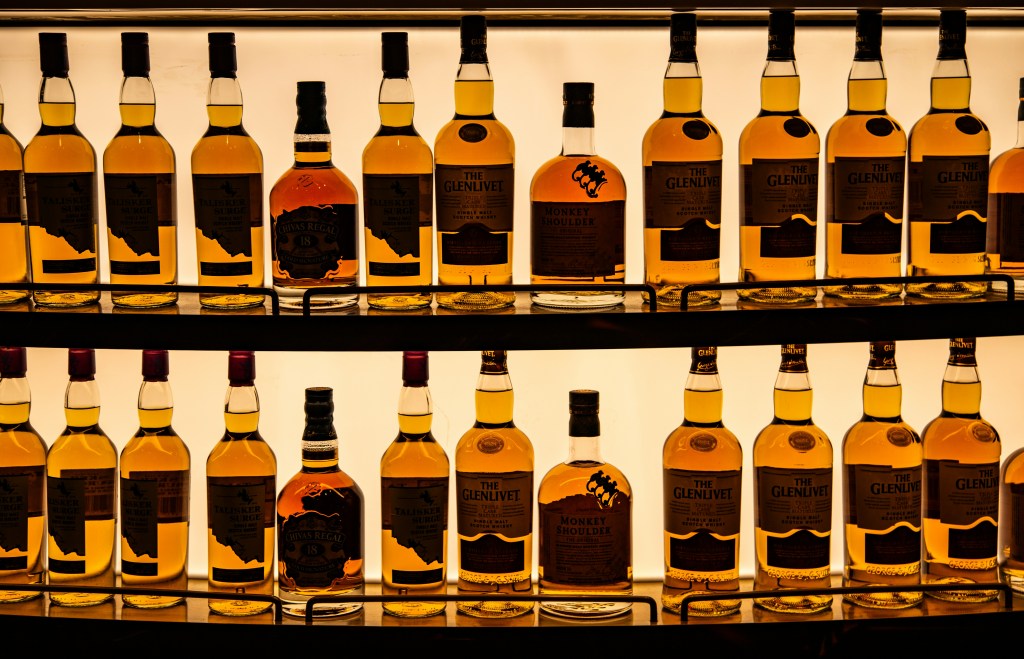Eretail media KPIs track competitors and effectiveness
Advertising is the major source of revenue for large platforms like Google, Facebook and Amazon and retailers are anticipating the potential for their sites to follow suit as cookies are being phased out. With an increasing variety of media activations available for brands, it’s crucial to keep an eye on competitor activity, plan a media campaign accordingly and monitor its effectiveness with a daily view of media activations of competitors at SKU level, by store, daily.
Eretail media KPI: Share of voice
A brand can measure the amount of visibility, or share of voice it has, in relation to its competitors in a few different ways: share of voice by retailer, keyword or category.
There are a few factors taken into account when this metric is calculated. Since ads have varying levels of impact at different stages of the purchasing process, banners that appear in search results are given more weight than ads that appear in taxonomy, or when a product search has already begun. The home page of a site or app sees a lot of traffic so in most calculations it carries as much weight as search. The search page carries weight because it is a decisive step and clicking on a banner there will take a shopper to an add to cart conversion point.Targeting is important and depends on what a media campaign is meant to do and this is why a retail strategy is important for every media buy.
The shopper funnel provides some guidance as to where banners should be placed. The objective of an ad is an important consideration. Brands get a scalable advantage when they elevate their visibility above competitors at the right moment.

Upper funnel targeting is useful for brand building and proposing cross sells. Lower funnel is useful for conversions like purchasing. This kind of precision is making eretail media more accountable, and it shares some commonalities with performance marketing.
Eretail media KPI: Search
How a brand performs in search ranking contributes significantly to its visibility. In addition to placing banners on the search page for maximum visibility, it’s also important to ensure your product appears in the first few search results of a product query.
Although it’s not–in one sense–retail media, search ranking is a form of sponsored product advertising, so in another sense it is. Ranking well in search requires a well-managed digital shelf including product content, package imaging, ratings and reviews and distribution, and the following graphic outlines just how important it is.

Eretail media KPI: Activation type
The major types of online media are banners and promotional ads. Banners are generally rectangular and exist in a variety of sizes and occupy varying amounts of space on a web page.
Promotional banners call attention to a sale or discount or special offer.
Using a KPI called promotion replication which tracks real-time retailer pricing with the pricing brands have negotiated with them and then cross-referencing it with the dates promotional ads actually run provides a powerful metric for manufacturers.
Other possible activations include social and collaborative ads, sampling, ecoupons and events, and brand pages. In-store promotions and events can also be advertised with online media. The list of options is growing…
With digital ad spends poised to continue growing steadily, having a trusted tech partner that provides comprehensive data analysis with KPIs derived from store and SKU levels daily is necessary.

Eretail media KPI: Category-wide monitoring
One of the most valuable aspects of online media tracking is seeing an entire category. This allows brands to see if, when, where and what competitors are advertising. Brands can thus respond strategically with their own media buy.
Knowing what format competitor’s banners are, if they’re promotional, multi brand or single brand, if they’re placed in search, the purchase page, or the home page, and what keywords they’re paying for is all very valuable knowledge. A category-wide view is essential to create the most impactful, cost-effective media campaign possible.
Cross-referencing sales data with category-wide eretail media can also go a long way to evaluating a campaign’s effectiveness or return on advertising spend (ROAS).




